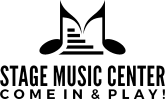Freedom at the piano
A too strict classical musical instruction can limit creativity
One of the major drawbacks for most students of classical music is the fact that learning an instrument is taught to them following a strict syllabus to which they must abide all the duration of their training otherwise they would not be considered quality classical players. Now, the very first problem with this is that music and the art of playing an instrument is both rhythm and dexterity. Music has thrived over the years because of its ability evolve when the time was necessary and to grow into something fully expressive or differently expressive, depending on the desire and skill of the musician. And, it is often considered that all forms of music, including classical music, is formed as a result of experimentation and testing new sounds and combinations.
When the topic of allowing for creativity in classical training schools is brought up, it is often immediately shot down and discarded as uncultured thinking because, according to most, classical music was a cultured way of expression and only elites should ever wield the power to express themselves in this way both in playing an instrument and in creating the rhythm for a complete song. Needless to say, the classical approach to music poses a rigid path to music and allows for very little freedom of actual expression or freedom to improve.
Improvisation on an instrument is highly possible and should be encouraged.
Freedom at the piano should be encouraged by music teachers
In the same manner, freedom at the piano for example should be encouraged and while people are learning an instrument or playing an instrument there should be no hold backs to how they may express themselves using their instruments. This, however, raises questions as to whether or not people should be allowed to approach music with the notion of relativity as long as there is rhythm. The notion of relativity is basically the notion that art is great or should be considered great as long as it is based on someone’s imagination. This way, even when a person is performing badly, his music should be considered as relevant even though it might be difficult to tell whether or not he is being imaginative or just incompetent.
Allowing for the use of relativity when judging music as well as other art forms comes as a stretch to the aim of the movement to encourage creativity in music. The difference is that while the latter seeks to ensure that while playing an instrument or learning an instrument with dedication and attention to the rudiments of the art, people should be allowed to express themselves outside of the class work from time to time, in order to fully exploit the possibilities that exist in other types and eras of music. However, their general performance should be determined based on a professional standard that is all-encompassing and not just based on classical music.
Freedom at the piano or on any other musical instrument should be encouraged and improvisation is a skill that should be taught. Playing an instrument is one of the places a person can throw away everything they are, their very existence. At this point, while their fingers are arched on the keyboard, tapping softly or hard on the keys, they become part of something bigger than themselves. Part of creativity. Part of beauty. A piece of art.
The Piano is the most versatile of instruments in its variety of arrangements, styles, and complexity of music it can produce. One thing, however, remains an enemy of creativity when it comes to playing the piano. This is being stuck in the box, afraid or not confident enough to improvise on your own.
Improvisation is a skill, a necessary one in every field. It is key for a person to get creative and do some magic, to think outside the box. Improvisation, like any other skills, takes practice and training to be mastered.

